Enhancing Staffing & Assisting Physicians with Virtual Critical Care & Tele-Nursing

How Tele-Nursing is Revolutionizing Healthcare in the Digital Age
In the post-Covid digital transformation, the healthcare industry has been rapidly evolving to meet the ever-changing needs of patients. One of the most significant innovations in healthcare delivery is tele-nursing. Tele-nursing, also known as telenursing or telehealth nursing, is a practice that leverages technology to provide remote nursing care and support.
Tele-nursing is a branch of telehealth that allows nurses to provide medical care and support to patients via digital communication channels. This can include video calls, telephone consultations, text messaging, and even remote monitoring devices. Tele-nurses play a crucial role in assessing and managing patients’ health concerns, offering education, and guiding patients in self-care. In an acute care setting, tele-nurses play an invaluable role in addressing the nursing shortage by enhancing staffing. Tele-nurses provide virtual critical care support to bedside nurses and assist physicians with education, second opinions, documentation, and patient care.
What are the Benefits of Tele-Nursing?
Improved Access to Care:
Tele-nursing can bridge the gap in healthcare accessibility, especially in remote, rural, and/or underserved areas. Patients can connect with experienced nurses without traveling long distances, reducing barriers to care.
Timely and Convenient Care:
Patients can access care from the comfort of their homes, saving time and effort. This convenience is particularly important for those with mobility issues, chronic conditions, or busy schedules.
Better Disease Management:
Tele-nurses can monitor patients’ health status regularly, ensuring that they adhere to treatment plans and medications. This leads to improved chronic disease management and fewer hospital readmissions. In an acute care setting, tele-nurses provide an additional layer of patient safety by providing additional nursing expertise and remote ICU monitoring.
Cost Savings:
Tele-nursing can be cost-effective for both patients and healthcare providers. Reduced travel and hospitalization costs contribute to significant savings.
Enhanced Patient Education:
Tele-nurses can educate patients about their conditions, treatment options, and lifestyle changes through digital channels, empowering patients to take charge of their health.
The Challenges in Tele-Nursing
Technology Barriers:
Not all patients have access to the necessary technology or internet connectivity. Further, some patients may have limited technological and computer literacy. These issues can limit patients, which can limit their ability to benefit from tele-nursing services.
Privacy and Security:
Protecting patient information is paramount. Ensuring the confidentiality and security of patient data during digital interactions is a critical challenge in tele-nursing.
Licensure and Regulation:
Licensing and regulatory issues can be complex, as tele-nurses may need to navigate different state or country regulations when providing care to patients outside their geographic location.
Resistance to Change:
Healthcare professionals and patients alike may resist the shift to tele-nursing, preferring traditional in-person care. Overcoming this resistance is a significant challenge.
The Impact on Healthcare
Healthcare Accessibility:
Tele-nursing expands access to healthcare services, particularly in rural or remote areas. This can lead to early diagnosis and intervention, reducing healthcare disparities.
Reducing Healthcare Costs:
By preventing unnecessary hospitalizations and enabling early intervention, tele-nursing helps reduce the financial burden on both patients and healthcare systems.
Chronic Disease Management:
Patients with chronic conditions benefit from continuous monitoring, which enhances their quality of life and reduces healthcare costs associated with uncontrolled conditions.
Crisis Response:
Tele-nursing can play a crucial role in emergency situations by providing immediate guidance to patients and assisting in emergency response coordination.
Support for Aging Populations:
As the world’s population ages, tele-nursing provides a viable solution for ensuring that the elderly receive timely and appropriate care while living independently.
The Future of Tele-Nursing
Tele-nursing is at the forefront of the digital healthcare revolution, offering innovative solutions to longstanding challenges in healthcare delivery. As technology advances and as healthcare systems adapt to new models of care, tele-nursing is set to play an increasingly prominent role in providing accessible, cost-effective, and patient-centered care. While it faces challenges, its potential to improve healthcare outcomes and the patient experience is undeniable. With proper regulation, investment in technology, and healthcare provider and patient acceptance, tele-nursing can become an integral part of the healthcare ecosystem, benefiting individuals and society as a whole.
Contact Intercept Telehealth today to learn how you can support your onsite staff with instant access to a dedicated team of teleintensivists, remote ICU specialists and emergency medical teams. Partnering with Intercept Telehealth, America’s trusted tele-ICU provider, means your facility will have the human resources it needs to address major medical problems regardless of labor shortages or a lack of specialists.



